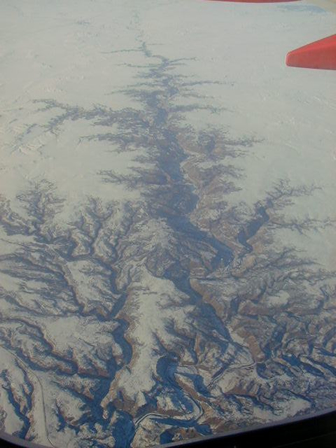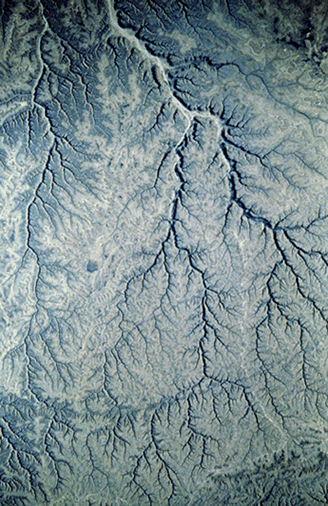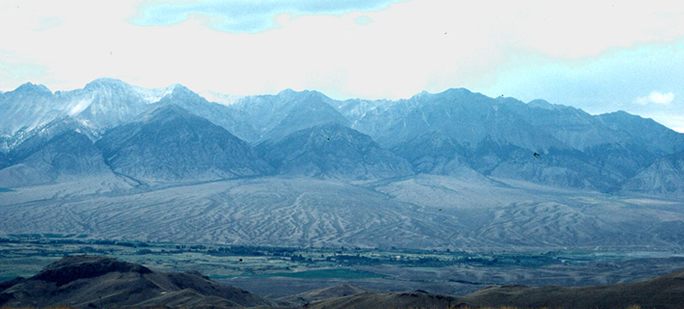Overland flow (runoff) of waters
with erosive potential is generated when the volume of water supplied
from rainfall or snowmelt
exceeds the infiltration capacity of the soils or substrate. For
slopes developing in arid/semi-arid regions (sparse protective
vegetation cover),
rain splash erosion can be very effective. Infrequent but substantial
rainfall events may be sufficient to generate runoff in which the
shear stress of overland flow exceeds the shear strength of the
surficial materials such that weathered or loose particles are
eroded and transported down slope. Spatial variation in surface topography
of the slope
and texture of the slope sediments often leads to gulling for
landscapes where low vegetation cover and root mass are insufficient
to stabilize
the surficial materials. These are sometimes referred to as wash
dominated slopes in which the rate of fluvial erosion, although infrequent,
exceeds
the rate of weathering which supplies the erodible sediment.
Climatic variables play a key
role in drainage form, slope form and process, and in the evolution
of a drainage basin
through time. Annual variations in temperature, precipitation,
and seasonality of precipitation work together to influence the
degree of chemical and physical weathering of slope materials,
the depth of weathered materials or soils that develop, and perhaps
most importantly, to determine the vegetation type and percentage
of cover across a landscape. Vegetation covers in turn controls
slope form and mass movement process and therefore the resultant
drainage basin attributes.
In temperate
regions, the rates of chemical and/or physical weathering are sufficiently
high to produce thicker sequences of weathered materials
or soils that often bury rock outcrops in their own weathering
products. Vegetation cover is high, protecting the surface from rain
splash,
and the root mass is sufficient to stabilize the materials on the
slope. When overland flow does occur it is often ineffective at
eroding the surface because of the protective vegetation, and infiltrating
waters moving downslope as “throughflow” (water moving
through permeable soil horizons) are prevented from eroding the
soil because of the binding affects of plant roots. However, “piping” of
waters flowing through small conduits (mm/cm scale) developed in
permeable soil horizons can exert sufficient shear stress or fluid
drag on soil particles of the pipe wall to transport them downslope.
In the temperate climate landscape, downslope movement of materials
to the fluvial channel occurs primarily by the slow mass movement
process of either continuous or seasonal creep. Longitudinal profiles
for these “creep dominated slopes” assume a smooth
convex/concave form from the drainage divide downward to the stream
channel.
Slope change from steep to gentle in the land surface could lead
to the reduction of stream carrying capacity and accumulation of
deposition at the base of the slope, usually in the form of alluvial
fans or coalesced alluvial fans (see Figure 2). The slope change
could be caused by tectonic uplift, faulting, or differential erosion
between two types of rock with different erodibility.



